
I write this from the incredibly privileged position of being able to live full-time in the Maasai Mara. Almost every day I venture out into Africa’s greatest and most exciting Reserve in search of animal sightings and encounters. Armed with a small arsenal of cameras, I drive around in search of fresh content – the intention: to share the magic with all of you across the globe and to build a visual diary and image bank that we can look back on in years to come. Every day here is special, and every passing week different to the next. But some weeks are just remarkable. And this was one of them. Enjoy This Week At Angama. It may be my most memorable yet.
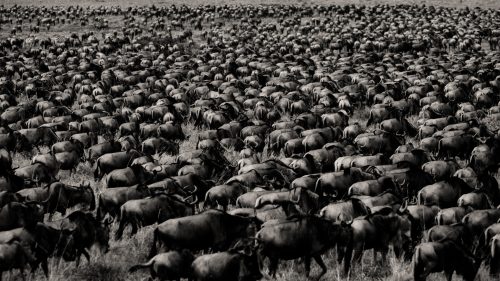
The Migration has reached fever pitch here in the Mara, particularly in the Triangle as rains continue to lure them deeper into Kenya. This is my third Migration season and I have no hesitation in saying that it is the biggest.
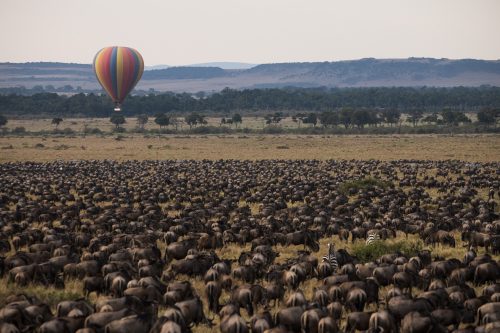
Had you asked anyone based in the Mara a few months ago, whilst we were in the middle of the heaviest rainfall in history, we would have predicted that this year’s Migration would be late and smaller than normal – how wonderful it is to be proven wrong.
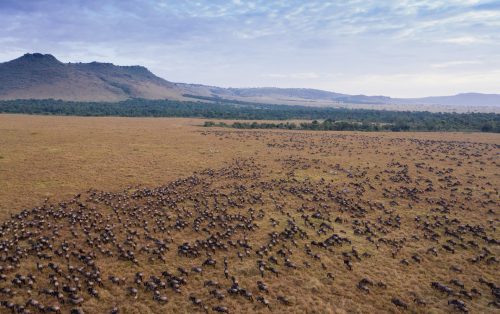
Despite the very late, and unprecedented rainfall, the herds have marched across the grasslands and are now spread out across the plains. Like ants they move. Currently they sit right on Angama Mara’s doorstep.
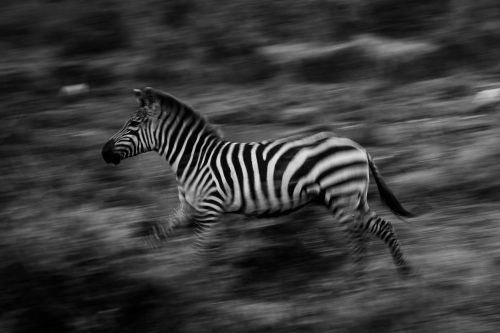
Zebra have moved in too, although their numbers don’t come close to the hundreds of thousands of wildebeest dotted across the plains. Panning is always a photographic challenge, but the results, if done correctly, can really go a long way towards showing movement, emotion and energy.
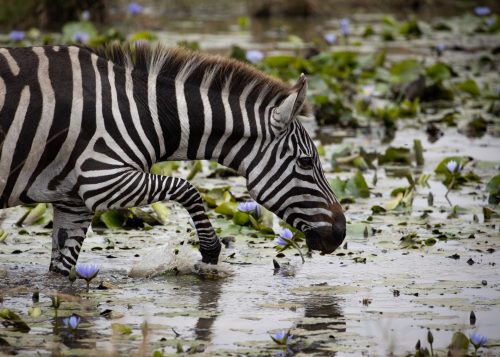
As a photographer I always get excited when I watch zebra moving towards watering holes for a drink. You just know that there is bound to be something interesting to capture. A time of excitement, social gatherings and playtime. On this particular scene it was the contrasting colours of the water-lilies which caught my eye.

Zebras make for the perfect black-and-white conversions.

Elephant behaviour changes rather dramatically during this peak Migration time. Their numbers are still high, but they move out of the park as they look to distance themselves from the herds. They still move into the swampy waterlogged areas to feed during the daytime, heading up the escarpment at night. This week I have already had elephants visiting my garden at the lodge no less than three times.

Lion dynamics continue to throw curve-balls at us. However, things do seem to be stabilising a little amongst the males. As many as 20 different male lions were seen by the Angama Mara guiding team this week alone. Mating in lion is always a rather explosive, and short affair, and my photographic tip is that you need to keep your shutter speed faster than normal to ensure you get the movement sharp.
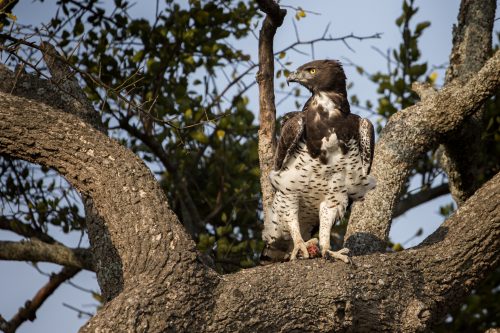
I found this bird perched in a single balanites tree near Serena Airstrip . After taking this, I sent it to Stratton Hatfield, from the Mara Raptor Project who confirmed his identity as the ‘Olive Pair Male’ and told me that this pair has a nest with a chick nearby.

This specific martial eagle is actually carrying a GPS tracker (a small device on his back) which allows Stratton, all the way in Europe, to monitor his movements. He sent me this screenshot which shows the detail to which he can research these birds using technology.
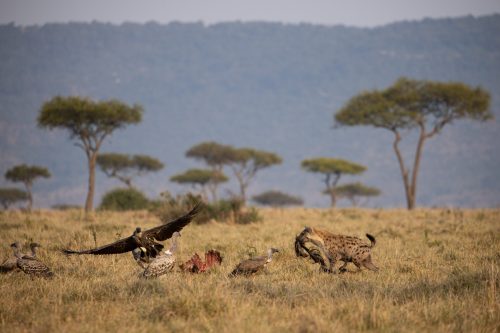
The Migration is a time of plenty and the animals are all enjoying the abundance of meat. Regardless of this, daily disputes between scavengers take place. Running, jumping, flying, calling, crying, biting and squawking all provide for fascinating, and often comical, sightings.
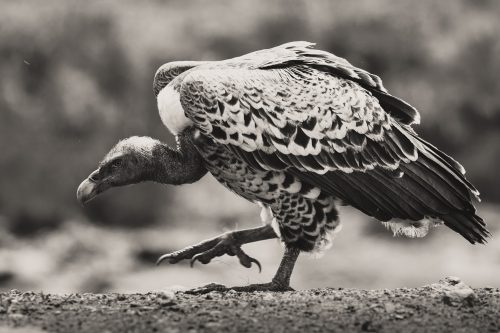
For months at a time we simply do not see these birds in the area as they move south into Tanzania. They play a crucial role in cleaning up much of the dead animal matter found littered across the plains at this time of the year. The tilt screen on modern day cameras enables you to seemingly get lower to the action than ever before. A low angle, together with a shallow depth of field often provides for a more interesting image and perspective
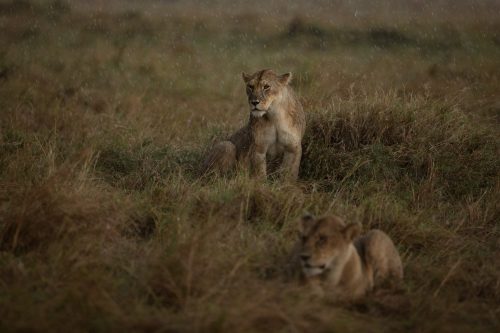
This week we have had afternoon rain showers most days. Although this is to be expected to some degree, the amount of rain we have had in a short time is rather unusual. At times the rain has been incredibly heavy, leaving the animals with little option but to sit it out. The benefit of this rain, however, is that because the Migration is largely rain-controlled, the wildebeest are moving further and further north. I remember two years ago it was only in late October that the wildebeest got to where they are already this year. And last year they didn’t even get here. This rain may just be a major factor in the outstanding Migration we are in the midst of.
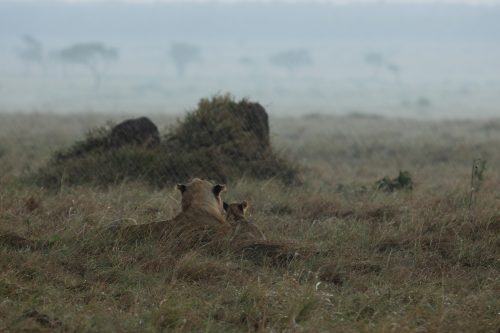
Not technically the most amazing photograph, but it has such a wonderful story to it. I opted for a slow shutter speed to try portray just how heavy the rainfall was. Those of you who follow lion dynamics in the Mara Triangle will be familiar with the Owino Pride. This pride had a young male lion a few years ago who was subsequently pushed out by the Cheli Nomads (Olalashe and Mkia). He was destined to a difficult life on the run. Back in May this year, Mkia, got involved in a battle with the Kichwa Males – and has not been seen since. This left Olalashe the sole ruler of the Owino Pride. In a remarkable turn of events he has since allowed the young male to return from isolation and team up. Here, the Owino Young Male, is seen protecting one of Olalashe’s cubs from the heavy rain.

One of the reasons I have such an affinity to lion is the social structure – perfectly shown by these sisters as they walk together in the pouring rain.
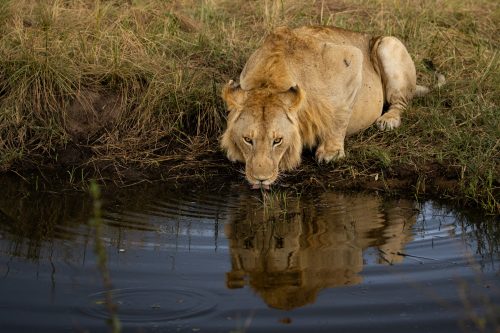
The Owino Young Male enjoys a drink in a seasonal pool that is full thanks to the rain.

Always on the lookout for something new, I tried to capture his reflection in the pool. It was at this exact moment that the heavens opened and I just love how the first droplets can be seen rippling across his reflection.
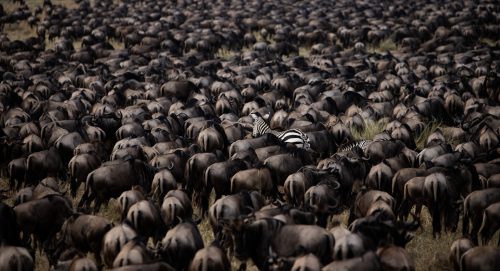
Identifying, and focusing on the zebra in amongst this herd, gives it a unique perspective. You may think a shot like this is common, but in my three years of Migrations this is only the third time I have been able to create an image like this.
Returning to the great migration I simply cannot do justice to how outrageously exciting and good it has been this week. I have seen densely packed, extensive herds, unlike I have ever seen before and river action that has kept me captivated. On one occasion I spent eight hours without moving the car.

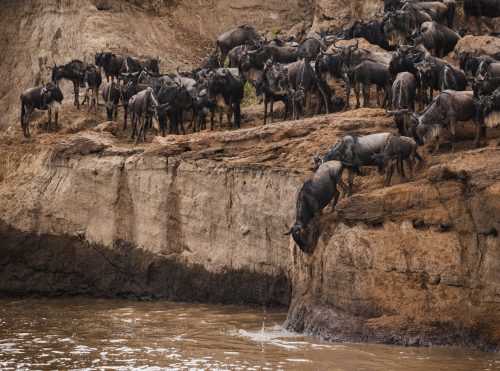
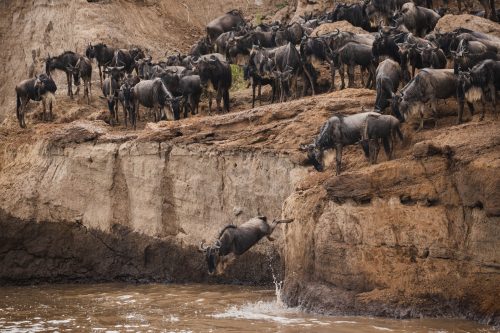
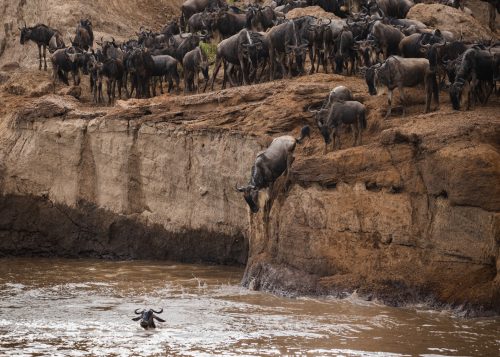
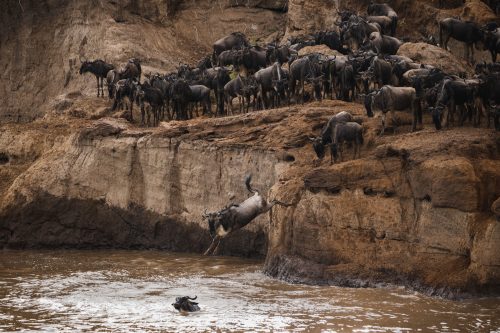

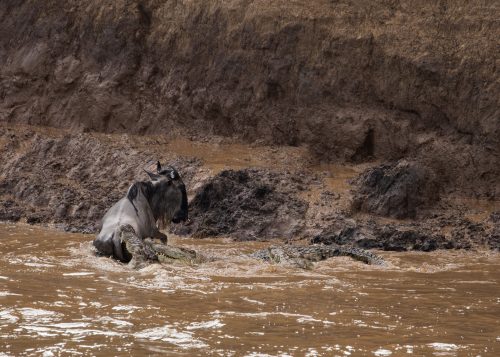

Of all the crossings that unfolded this week, there is one that stands out as probably the most exciting, and devastating of all – it was in many ways tragic. For some reason the wildebeest decided that they should cross the Mara River at a point with very steep sand cliffs. They do not normally cross here, as it is simply too dangerous and difficult, but this week they did. It was carnage. I had heard of this happening a handful of times over the last 20 years and had seen some haunting images of it, but I have never seen anything like it. Hundreds of bodies piled up on top of each other. Like lemmings the wildebeest had plunged over the cliff to their death. A heaving mass of bodies, many still alive but unable to move – and all whilst they were fighting for their lives, the herds continued to cross back and forth.



Over the course of that day, I watched over 10 crossings at this specific point, saw crocodiles kill 14 wildebeest and witnessed hundreds jump to their death. There are no words to describe the mixture of emotions that raced through my head, and I just hope that these images partly convey how dramatic, and tragic this specific crossing was. I grappled for a long time about if I should even show many of the images I took, but at the end of the day decided that it was nature – this crossing was by no means influenced by humans, and it was ultimately their decision to cross here. * Not for sensitive viewers.
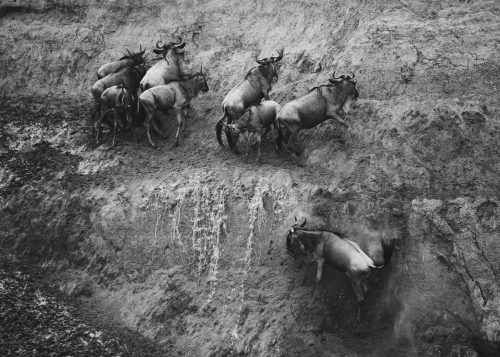

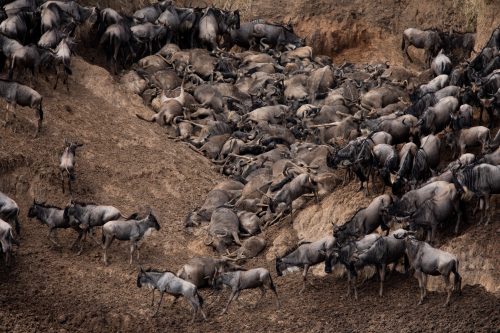
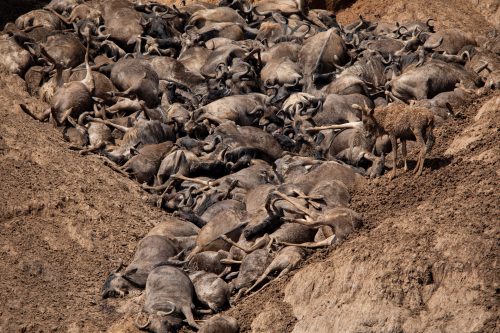

Every hot-air balloon flight is special, but two years ago I went up on a flight when the lighting was spectacular. The sun rose above the horizon and the light danced across the landscape. A few balloons trailed the one I was in and it all came together perfectly as we drifted from the grass into the riverine forest. To date, this still remains one of my favourite hot-air balloon photographs.
Filed under: This Week at Angama
Subscribe for Weekly Stories
Comments (5):
24 August 2020
Great photos and compassionate thoughts about wildlife and the circle of life in the Mara. Three years ago I witnessed two cheetah take down a wildebeest, cheetah #1 had the wildebeest by the throat, cheetah #2 by the rump. The wildebeest did not struggle for long but it was anguishing to watch cheetah #2 tear away at the hind quarter of the wildebeest. A couple from our camp were in a vehicle cattycorner from us, the husband recording the brief death struggle and the ensuing feasting upon the dead animal. The wife could not take it; she looked away and started reading a book.
23 August 2020
Hi Adam. I’m a friend if your parents, they have sent me this incredible blog. I was lucky enough to have visited Angama Mara a few years ago. Memorable!! . Your blog has rekindled so Much of the magic. Thank you for an incredible migration experience!! I do hope to have the privilege to drive down that escarpment road to experience the magic of a day on the plains once again in my life.
23 August 2020
Interesting read.... congrats on the engagement Adam. Amazing.
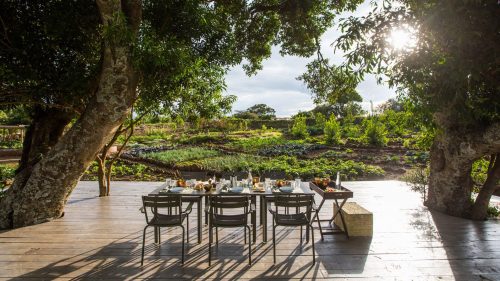
The Angama Shamba